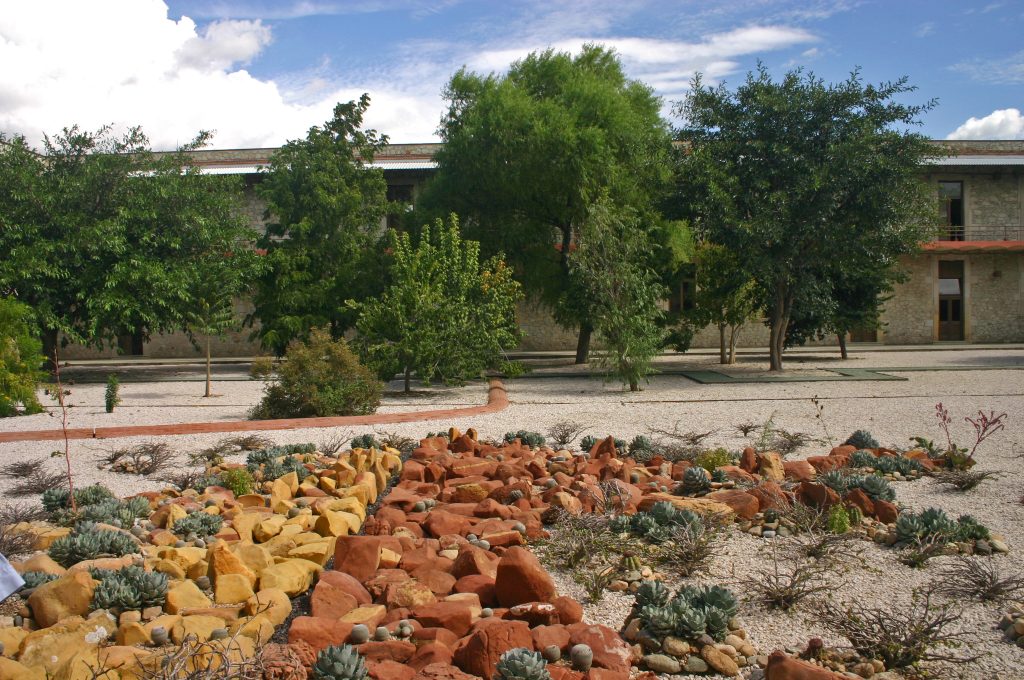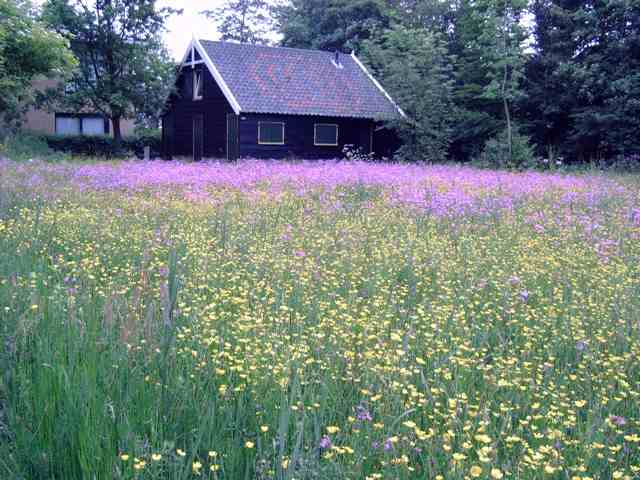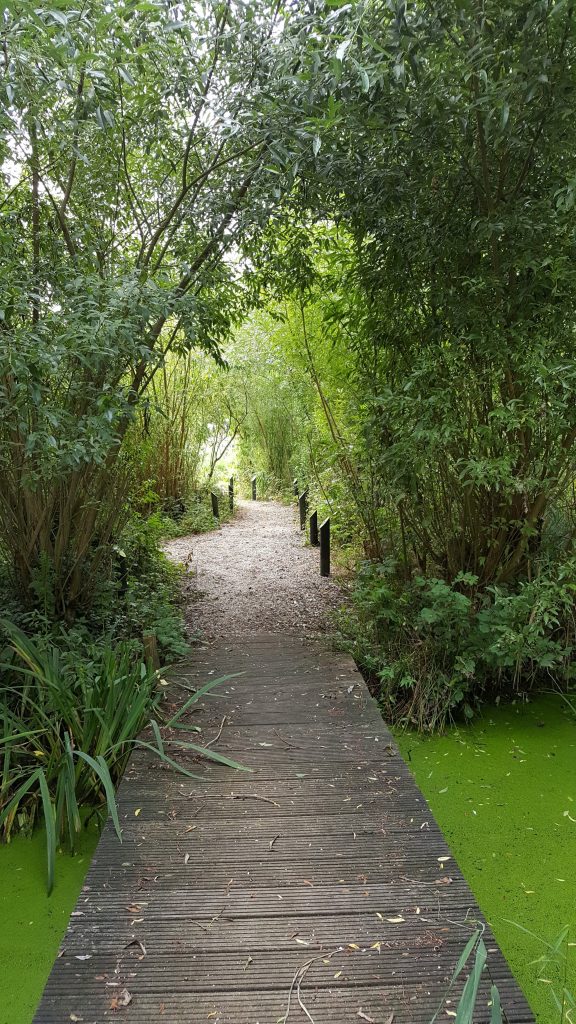Ethnobotanical Gardens what are they?
The whole idea of starting an Ethnobotanical garden came about after volunteering for 2 months at ‘Jardin Etnobotanico de Oaxaca’ in 2008!


So what is an Ethnobotanical garden? Hope to explain all about this on the next page and why I feel it is important to have one in this day and age of global warming and pandemics!
First of all what is Ethnobotany?
Ethno-botany (from ethnology, study of culture, and botany, study of plants) is the scientific study of the relationships that exist between people and plants.
But I would go further than this as they have done at Oaxaca’s Botanical garden and this is to just grow their own, native plants in relation to all the uses by their people.

The biodiversity of the State of Oaxaca is enormous and therefore the variety of plants so interesting.
When I came back from my visit I found hardly any reference to ‘Ethnobotanical gardens’ in Europe- the only one seem to be at the University in Kent .
And this garden seems to concentrate mostly on foreign useful plants anyway rather than pure native plants.
I found this old article by Sue Minter (she was the Supervisor of the Palm house while I was studying at Kew for the Kew Diploma (1986-1989)). Just a short extraction of that article here:
Volume 1 Number 19 – December 1999:
‘Ethnobotany is not about the use of plants by indigenous people in the tropics alone, it is also about the daily dependence on plants by all of us. The Convention on Biological Diversity and Agenda 21 have brought a new pride in national biological heritage and the knowledge of both its use and sustainable use by consumers are all issues relevant to ethnobotanical teaching. Educators are encouraged to reconnect people to plant use via collections of products, product packaging, living plants and by exploring the use of Europe’s own flora, as well as the rich heritage of plant use by immigrant communities which is often concentrated in urban areas – so called ‘urban ethnobotany’.
It is tempting to see ethnobotany as the study of the use of plants by anybody other than ourselves. Historically, the strength of this subject has emerged from the study of the uses of plants by tribal and indigenous people, particularly in the tropics.’
In Britain and Europe there are what we call here in Britain; ‘Physic Gardens’, which are Gardens associated with medicine. I can’t find anything similar with the same ideas as the Etnobotanical Gardens in Oaxaca though; where they display their native plants which have an association with people for all different uses such as for food, medicine, art, dyes, condiments or any other use!
The director of the ‘Jardin Etnobotanico de Oaxaca’ did not want any name or interpretation labels ‘spoiling’ the garden and instead there are guided tours provided in Spanish as well as in English by employees who all know about the uses and communicate this knowledge in this ‘novel’ or ‘traditional’? way!
We are all very proud of our Botanical Gardens here in the Western world and appreciate the many amenity gardens too; who mainly display exotics!
I think it is rather sad that we don’t seem to celebrate, or even know, our native plants/herbs to the extent as we seem to value and know our exotic plants!
There are of course many individuals and groups interested and working with our native flora but never with the combination, association & tradition of people.
Is it not a good idea to make the native plants (sometimes called weeds) ‘popular’ again to make people appreciate them and therefore take care more of their own surroundings? When I have spoken about this with fellow gardeners/friends they tell me that it won’t ‘sell’ as native plants are not exciting enough to tell a story about….
The knowledge is there still-just- in books mainly, for example in Richard’s Mabey’s ‘Food for Free’ and there is a renewed interest in things like foraging such as with the brilliant Eatweeds blog for example and use of herbal medicine-although many herbal medicine are either from North American plants or Chinese origin! In Cornwall there is the interesting ‘Plants for a Future’ project and this has native plants as well as exotics. They also have a brilliant database with 8000 plants!
‘Heemtuin’ or Native Garden and what are they?
In my native ‘Holland’, many major towns have ‘heemtuinen’ (loosely translated as ‘native habitat gardens’) where various local habitats are re-created with all their typical plants. Some information is given on signs about their uses and folklore. These gardens are mainly to do with nature-conservation and to make people aware about their local environment. Often local schools visit them to do outdoor classes.
Just a little flavour on what this small garden does:



willow collection.
There is nothing similar to this in Britain although there are plenty of Wildlife Gardens which come close to this unique concept.
Here is Michael King’s post about Jac. P. Thysse Park in the Netherlands, which is one of the first ‘Heemtuinen’.
I was thinking that our traditional Botanical Gardens would be interested in including ethnobotany as a main subject. Some gardens do include the more interesting native plants in their outdoor displays for example at the Eden Project in Cornwall. There is a Herbal medicine or Apothecary garden also at the National Botanic Garden of Wales.
Edinburgh Botanic Garden has a Cryptogamic Garden, which specializes in the lower plants:
The best-known groups of cryptogams are algae, lichens, mosses, and ferns, but it also includes non-photosynthetic organisms traditionally classified as plants, such as fungi, slime molds, and bacteria.
But I couldn’t find any information on our best known Botanical Gardens at Kew; but they do have the Economic Botany Museum.
Most gardens have to find their own finances nowadays and might not find ethnobotany rewarding enough. But I feel that (like the Australian Aborigines and North American Indians) we ought to know more about our own, native plants?
So, this is the reason why I’ve started my Virtual Ethnobotanical Garden, where I can at least start with researching the varied uses of all our native plant families and their many varieties!
Please get in touch with me through my email address: yokesmagicgarden@gmail.com and thank you for reading!
